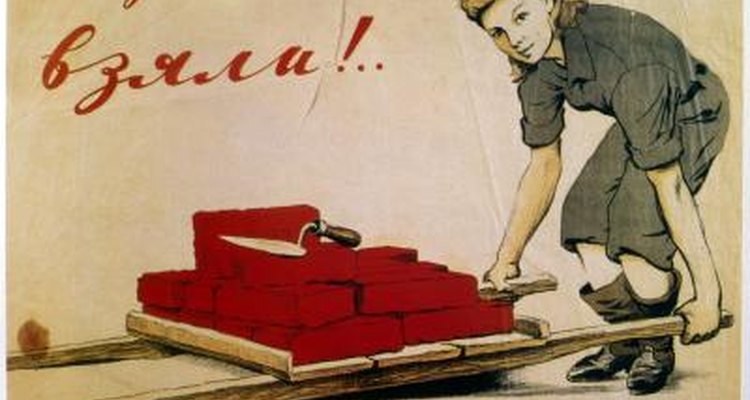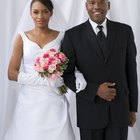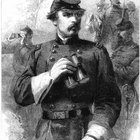
The 1940s were a decade marked by World War II, big band music, styles like the zoot suit and an increase in movies and other entertainment as morale boosters for the war effort. Historical events and cultural trends helped to shape the relationships between husbands and wives during this decade. The "nuclear" family was the context in which most spouses operated, and tradition was very important.
The Traditional Family
During the 1940s, most husbands and wives related to each other as members of the traditional family unit. This meant that husbands were the breadwinners and leaders of the household, usually working outside the home. Wives stayed home to tend to domestic matters, such as cleaning, cooking and raising children. The traditional view was that wives were helpers for their husbands. This stable, predictable union was the cornerstone for the community.
War Effort
World War II was in full swing in the 1940s. This meant that many husbands were absent from the home due to military service. Since this left numerous job positions open, there was a dramatic increase in women in the work field. This was is stark contrast to the previous lifestyle of women working exclusively in the home. When the war was over, this left many married couples with the task of adjusting to "normal" life once again. Many husbands were markedly different after seeing other parts of the world and facing battle. Many wives also were different after getting a taste of the workplace. Couples were left with the options of renegotiating the marital roles within the home or simply returning to the previous traditional style of pre-war life.
Divorce
Divorce was dramatically less common in the 1940s as compared to modern statistics. The Vital Statistics division of the Census Bureau first began to record marriage and divorce statistics in the 1940s. The number of divorces rose each year between 1940 and 1946 and then dropped each year between 1947 and 1949. marital conflicts were usually handled within the home and kept private.
Children
Husbands and wives of the 1940s began having children at a younger age on average. Therefore, most spouses learned to relate to each other in the context of parenting together early on. Couples had more children on average as well, as birth control methods were significantly limited. The return of military personnel also helped to fuel the "Baby Boom" of the 1940s.
Related Articles

Differences Between Modern & ...

Traditional Gender Roles in Marriage

The Effects of Divorce on Women & Men

Is It Common to Fight With a Husband ...

Traditional Roles of Men & Women in ...

What Were the Traditional Gender Roles ...

What Is the Symbolism of Jumping the ...

Marriage in Mexican Culture

Pros and Cons of Marrying

What is the Typical American Family?

How Poor Relationships Affect the Family

Reasons Women Delay Marriage

Victorian Era Wedding Traditions

The Effect of Divorced Parents on a ...

Senior Marriage Problems

The Effects of a Dysfunctional ...

How Absent Fathers Affect Men

Responsibilities of the Groom's Parents ...

Men's Roles in the 1800s

How to Change Your Name If Married in ...
References
- Minnesota Historical Society: Women and the Home Front During World War II
- Centers for Disease Control and Prevention: Fast Stats -- Marriage and Divorce
- Centers for Disease Control and Prevention; Achievements in Public Health, 1900-1999: Family Planning; December 3, 1999
- University of California Library: No Place for a Woman -- The Family in Film Noir; John Blaser; 1999
Writer Bio
Charlotte Johnson is a musician, teacher and writer with a master's degree in education. She has contributed to a variety of websites, specializing in health, education, the arts, home and garden, animals and parenting.
Photo Credits
Photos.com/Photos.com/Getty Images